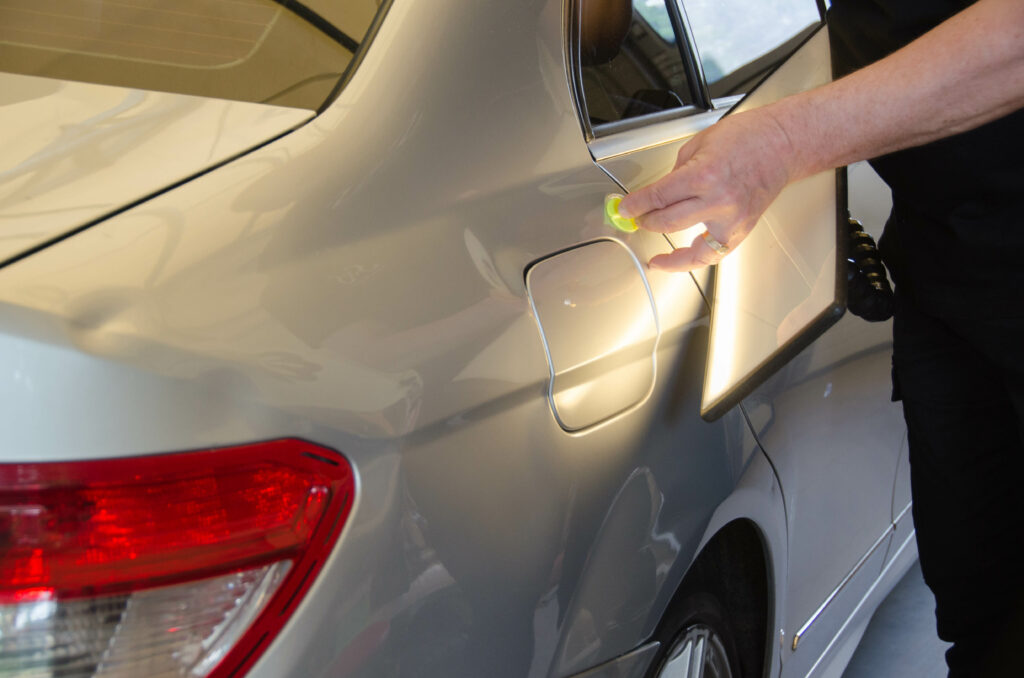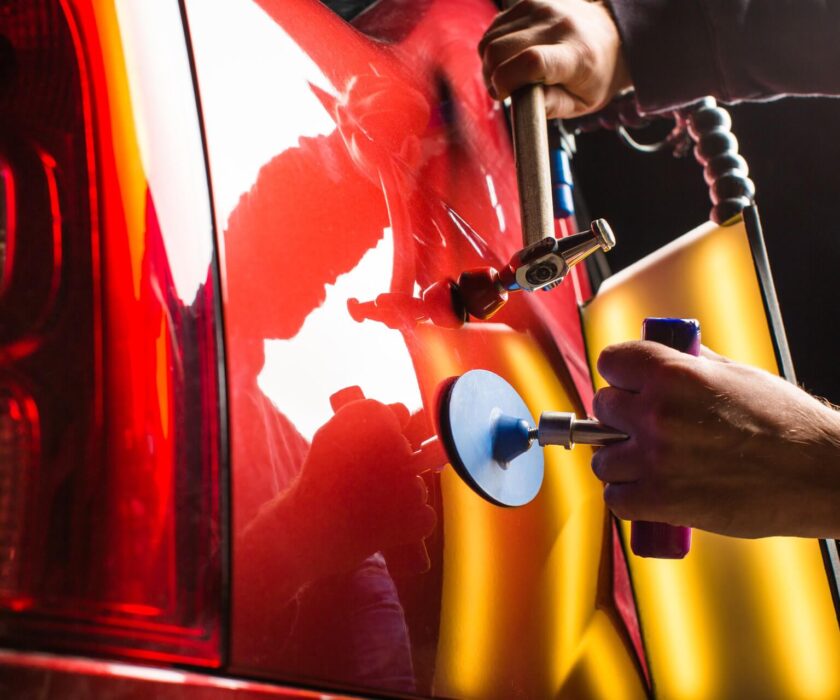When your car suffers minor dings or dents, it’s natural to want a quick, efficient, and cost-effective solution. Paintless dent repair (PDR) is a popular technique used by many auto body shops to fix these issues without the need for extensive body work or repainting. Understanding whether your car qualifies for PDR can save you time and money while preserving the original finish of your vehicle.
What is Paintless Dent Repair?
PDR is a method used by auto repair professionals to remove small dents and dings from a vehicle’s body without compromising the paint job. This technique is especially effective for hail damage, minor creases, and door dings that haven’t stripped the paint from the vehicle. PDR not only maintains the integrity of the original paint but is also environmentally friendly and less costly than traditional auto body repair methods.

Criteria for Paintless Dent Repair Eligibility
Depth and Size of the Dent
The size and depth of the dent are crucial factors in determining if PDR is the right method for repair. Generally, PDR works best on dents that are no larger than the size of a standard door ding. As for depth, the shallower the dent, the more likely PDR can be used to repair it effectively. Deep dents that have stretched the metal too far may not qualify.
Location of the Dent
The location of the dent also plays a significant role in determining the suitability for PDR. Dents located on flat, flexible panels are the easiest to repair. However, dents on the edges of doors, near the panel’s edge, or on curved areas like the hood or roof can be more challenging and might not be ideal candidates for PDR.
Condition of the Paint
PDR requires that the paint in the dented area remains intact and flexible. If the paint has been cracked, chipped, or otherwise damaged, or if it has become brittle with age, PDR may not be advisable as the process could further damage the paint. Additionally, cars with older paint jobs or those that have been repainted might not be good candidates for PDR.
Previous Auto Body Repairs
Vehicles that have undergone previous auto body repairs in the same area where the current dent is located may not be suitable for PDR. Previous body filler or other repair materials can prevent the PDR method from being effective, as these areas are not as pliable as original sheet metal.
Advantages of Paintless Dent Repair
Choosing PDR offers several benefits over traditional auto body repair methods:
- Cost-Effective: PDR generally costs less than traditional dent repair methods because it requires fewer materials and less labor.
- Timesaving: Most PDR treatments can be completed in a few hours, whereas traditional methods may take days.
- Value Preservation: By maintaining the original paint, PDR helps preserve the resale value of your vehicle.
- Environmentally Friendly: PDR does not use paint, fillers, or other chemicals, making it a more environmentally sustainable option.

When to Consider Paintless Dent Repair
PDR is ideal for fixing hail damage, parking lot dings, and similar minor deformities on your vehicle’s surface. It’s a suitable option when the damage is minor and superficial, and when maintaining the original paint is a priority. If your car meets the criteria outlined above, PDR could be the best choice for addressing cosmetic damage quickly and efficiently.
Why Choose Master Collision Group for Paintless Dent Repair?
At Master Collision Group, we specialize in paintless dent repair, offering top-tier service for those in the Minneapolis area. Our skilled technicians have extensive experience with PDR and can quickly assess whether this method is suitable for your vehicle. We pride ourselves on delivering high-quality repairs that not only fix the damage but also maintain the aesthetic and resale value of your car. Choosing Master Collision Group means choosing a dedicated team that ensures your vehicle looks its best with minimal downtime. Contact us today and let us help you restore your car’s appearance effortlessly and efficiently with our expert paintless dent repair services.


